
Plant Profile Southern Magnolia (Magnolia grandiflora)
Magnolia grandiflora L. southern magnolia. Magnolia grandiflora L. southern magnolia. Description of Values. Value Class Food Cover; High: Average 25-50% of diet: Regular source of cover: Low: 5-10% of diet: Infrequently used as cover: Minor: 2-5% of diet: Sparsely used as cover: Moderate: Average 10-25% of diet:

Southern Magnolia flower Magnolia grandiflora 20130112… Flickr
Native to the southeastern United States, Southern Magnolia is relatively fast-growing and pest free. Long-lived, its attractive evergreen leaves and creamy-white fragrant flowers make it a popular ornamental and shade tree worldwide in warm temperate and subtropical regions. Its dried leaves are prized by florists in flower arrangements.
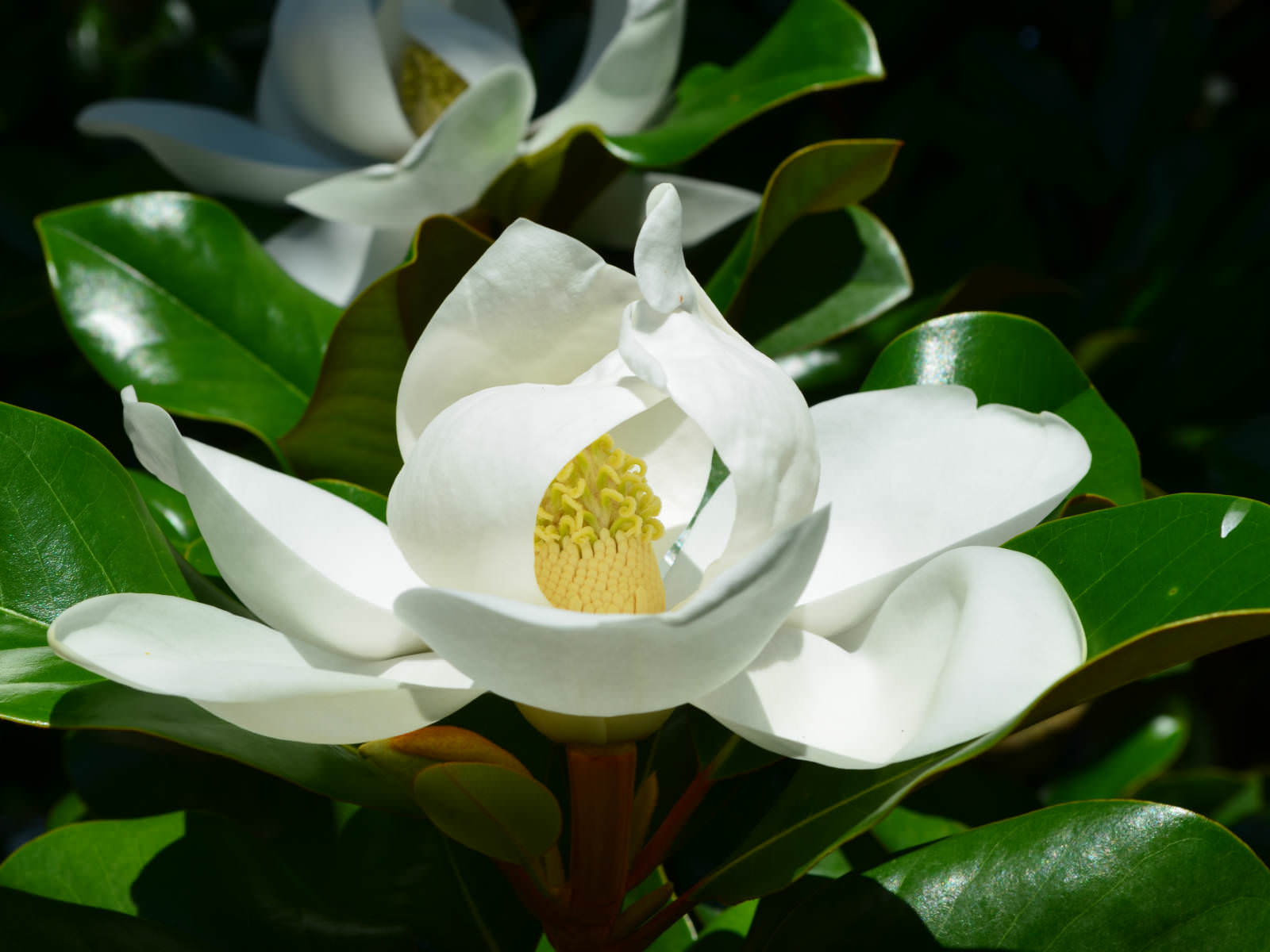
Magnolia grandiflora (Southern Magnolia) World of Flowering Plants
Southern magnolia (Magnolia grandiflora), also called evergreen magnolia, bull-bay, big-laurel, or large-flower magnolia, has large fragrant white flowers and evergreen leaves that make it one of the most splendid of forest trees and a very popular ornamental that has been planted around the world.
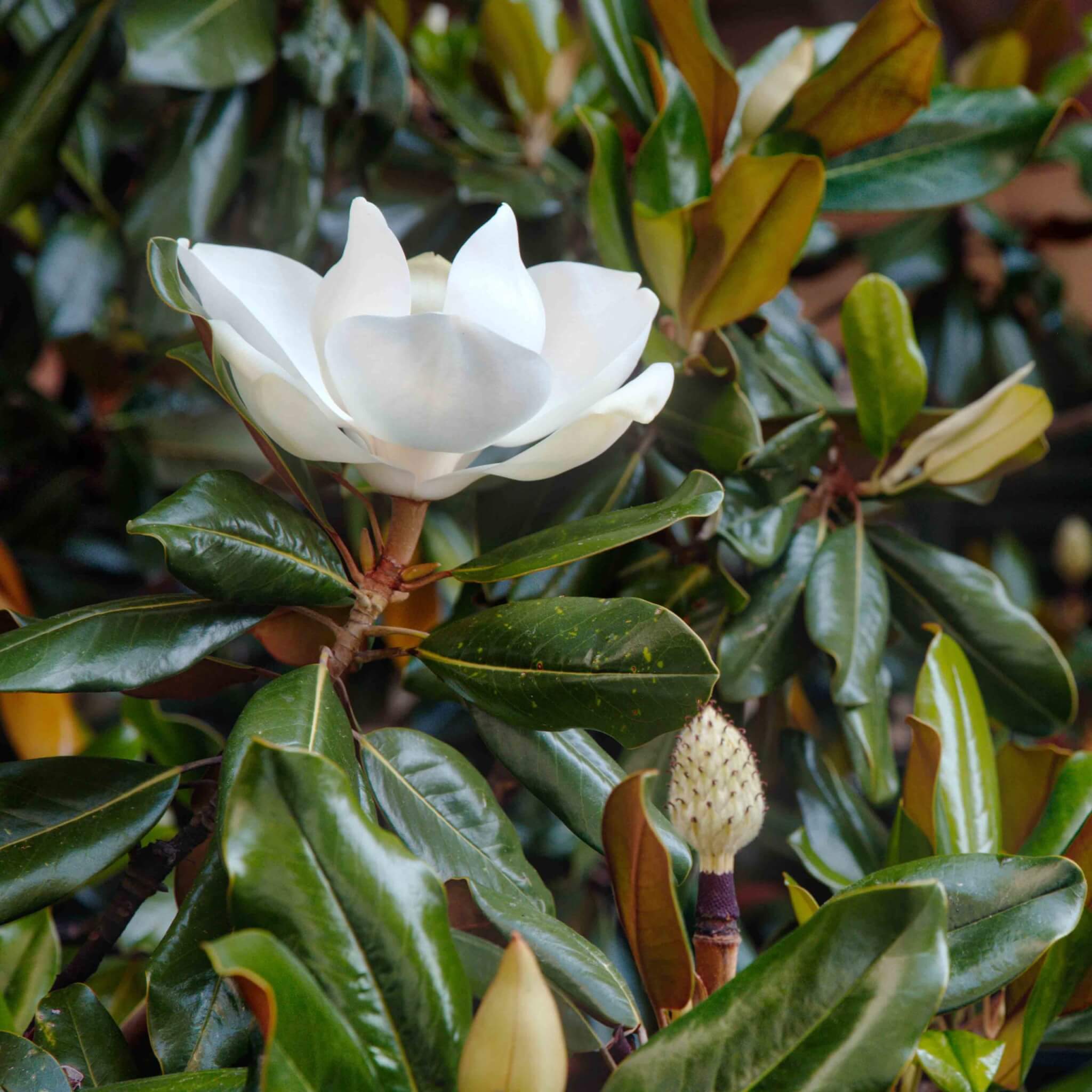
Little Gem Dwarf Southern Magnolia Western Star Nurseries
Southern Magnolia (Magnolia grandiflora) Growing & Care Guide for Gardeners. Article by Dean Ravenscroft, Ph.D. - Updated 16th Oct 2023. The Magnolia grandiflora plant is a fast growing native tree (or rounded shrub) of southeastern USA.. It is loved for its large showy flowers. These are heavily fragrant, and may appear before the formation of leaves.
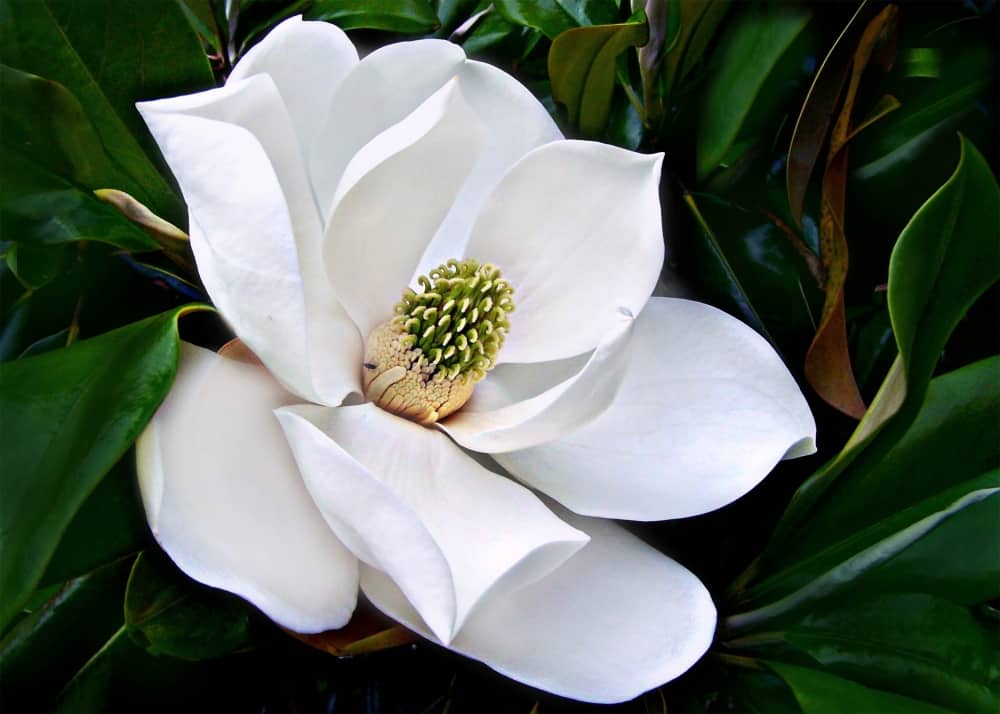
Magnolia Grandiflora Tree, Southern Magnolia White Flower, Starter Plant Sandy Nursery Online
58 Family: Magnoliaceae Genus and species: Magnolia grandiflora Description: The southern magnolia, a tree indigenous to the southeastern United States but sporadically found all along the East coast, is a broadleafed evergreen.

Southern Magnolia (magnolia Grandiflora) Photograph by Brian Gadsby/science Photo Library
Capable of growing at a moderate rate to a height of 80 feet or more with a 30 to 40-foot spread, Southern Magnolia forms a dense (more open in the shade), dark green pyramidal shape, the lower branches often bending to the ground. However, form and growth rate on seedlings is incredibly variable.
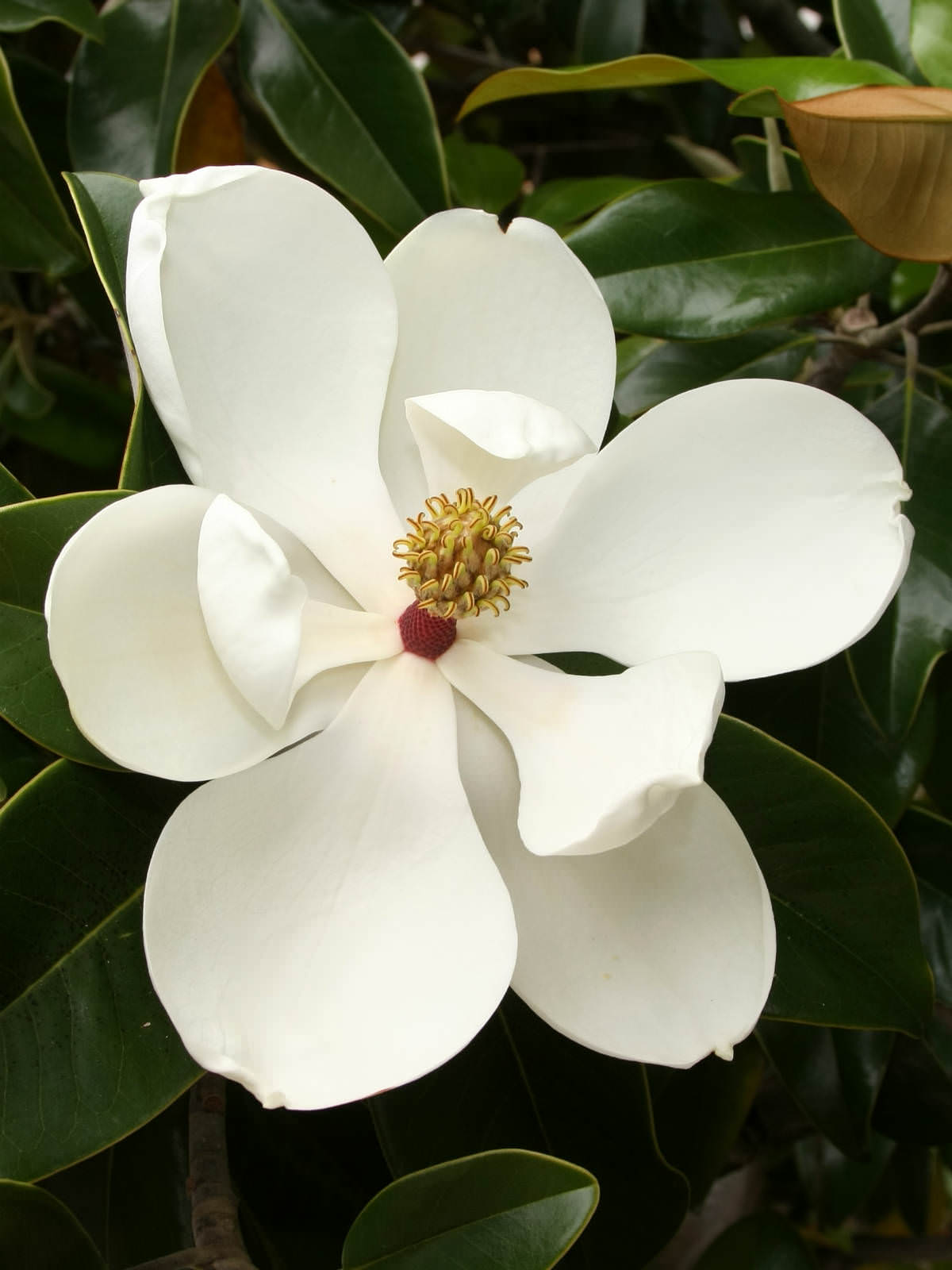
Magnolia grandiflora (Southern Magnolia) World of Flowering Plants
A regular Southern magnolia (Magnolia grandiflora) gets big—about 60- to 80-feet tall and 30- to 40-feet wide. That's too big for a small yard. Even if you remove the lower branches, its dense shade and surface roots make growing grass beneath it impossible. And a big tree drops leaves—not just in fall the way deciduous trees do, but every.
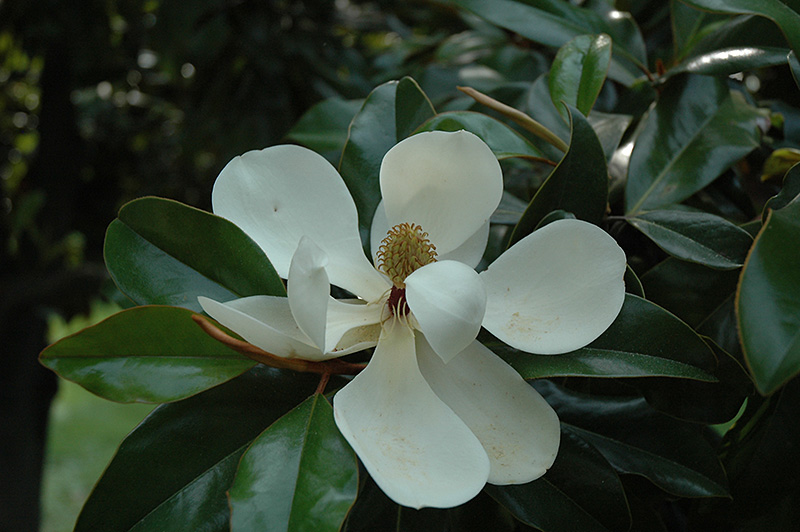
Southern Magnolia (Magnolia grandiflora) in Long Island Westbury Nassau County Jericho Mineola
Southern magnolias are native to the Southeastern United States, from Virginia south to central Florida, and then west to East Texas. The tree is found on the edges of bodies of water and swamps, in association with sweetgum ( Liquidambar styraciflua ), water oak ( Quercus nigra ), and black tupelo ( Nyssa sylvatica ).

Southern Magnolia (Magnolia grandiflora)
Magnolia grandiflora 'TMGH' Pronunciation: mag-NOH-lee-uh gran-dih-FLOR-uh. SKU #00998. USDA Zone. 6-10. Your climate might be too cold for this plant: Change Location. Pre-Order for Spring Find In Store. Add To Wishlist.. Southern magnolia is the state flower of Louisiana and Mississippi. It grows in mixed stands of forest in areas of well.
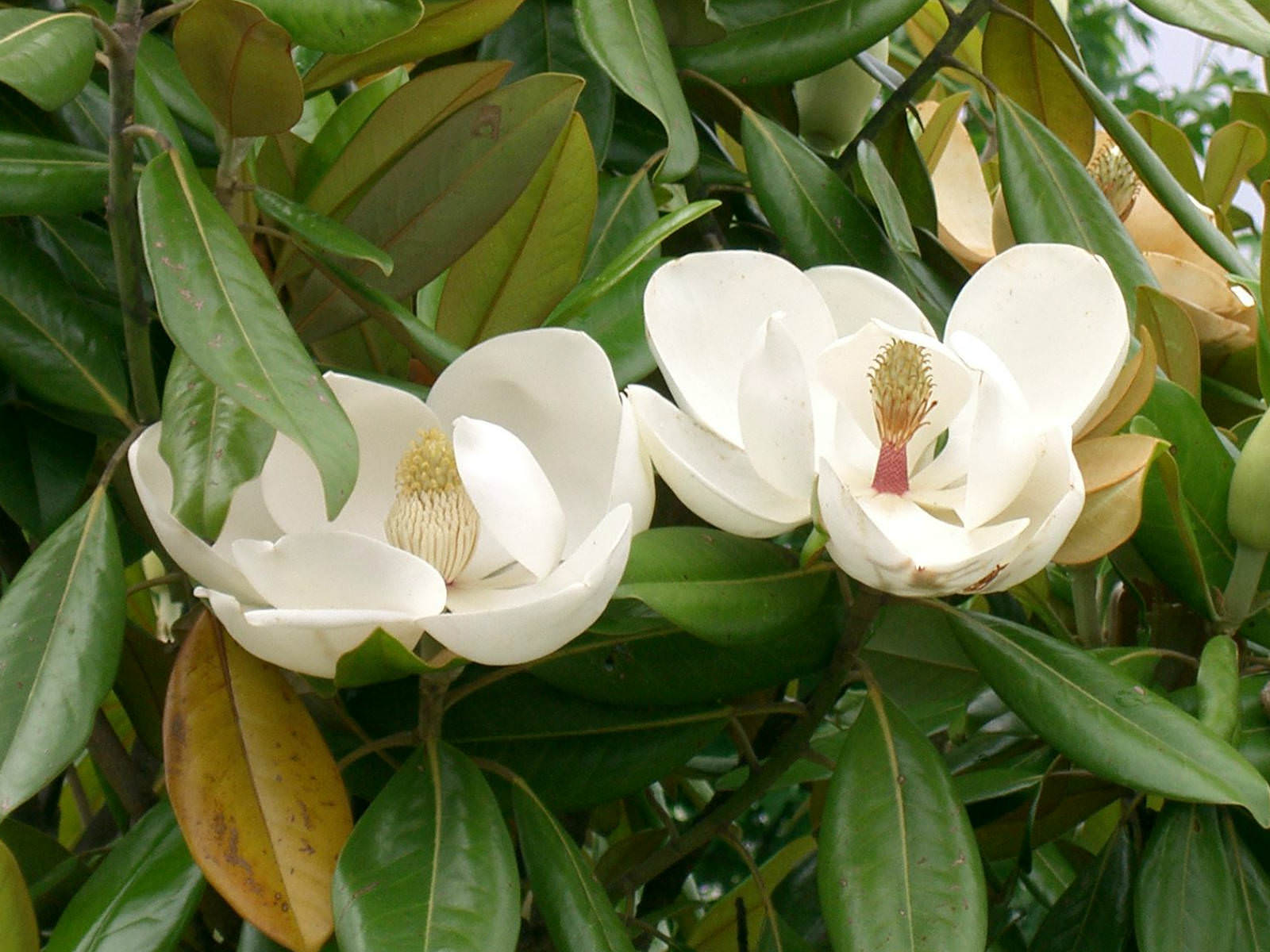
Magnolia grandiflora (Southern Magnolia) World of Flowering Plants
The leaves of the southern magnolia are shiny and oval and can be up to 20cm long. The flowers are also large and a similar size as the leaves. They have an attractive perfume and are a creamy white colour. The flowers end up blooming into summer so you'll have a lengthy period to enjoy them.
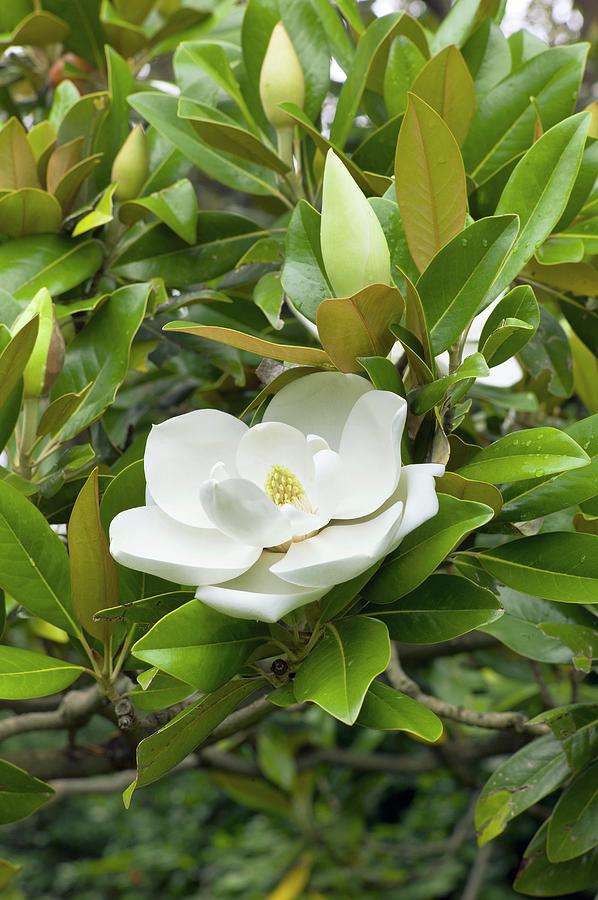
Southern Magnolia (magnolia Grandiflora) Photograph by Dr Jeremy Burgess/science Photo Library
Magnolia grandiflora, otherwise known as the Southern magnolia or Bull Bay, is an evergreen species of flowering trees in the Magnoliaceae family. This appealing plant grows natively in several regions of the southeastern United States. You can find it from central Florida to Virginia, and west to East Texas.

Plant Profile Southern Magnolia (Magnolia grandiflora)
The southern magnolia ( Magnolia Grandiflora) is a beautiful, adaptable evergreen tree known for its large, fragrant, white flowers and lustrous dark green leaves that grow on the conical crown. The fall fruit will attract birds to your landscape .
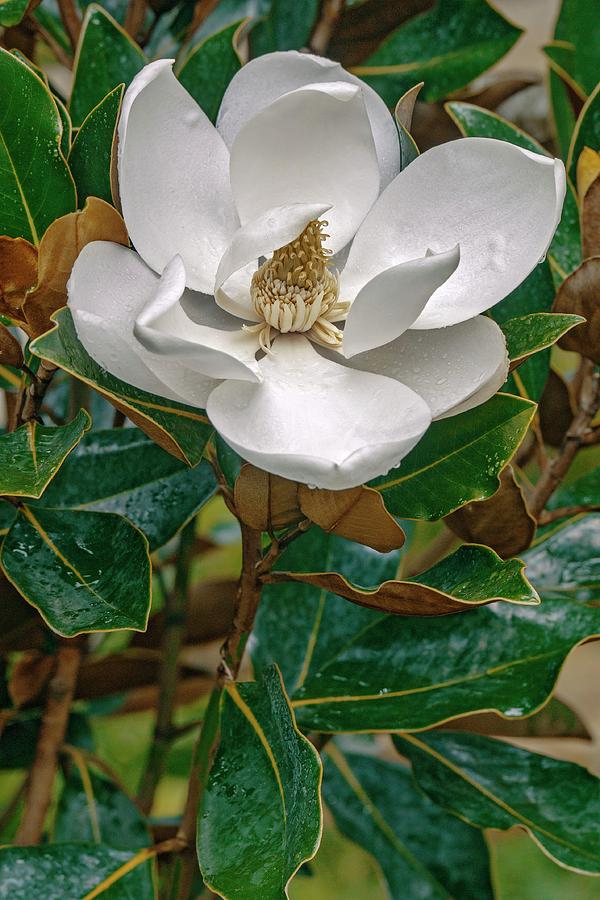
Southern Magnolia (magnolia Grandiflora) Photograph by Dr. Nick Kurzenko Fine Art America
Capable of growing at a moderate rate to a height of 80 feet or more with a 30 to 40-foot spread, southern magnolia forms a dense (more open in the shade), dark green pyramidal shape, the lower branches often bending to the ground. However, form and growth rate on seedlings is incredibly variable.
:max_bytes(150000):strip_icc()/magnolia-grandiflora-growing-guide-5200996-06-60985132deaa465582299ccc7c720b50.jpg)
How to Grow Magnolia Grandiflora (Southern Magnolia Trees)
Southern magnolia, is a large, broadleaf evergreen tree that is noted for its attractive glossy dark green leaves and its large, extremely fragrant flowers. It is native to the bottomlands and moist wooded areas in the central and southeastern coastal plains from North Carolina to Florida and Texas.
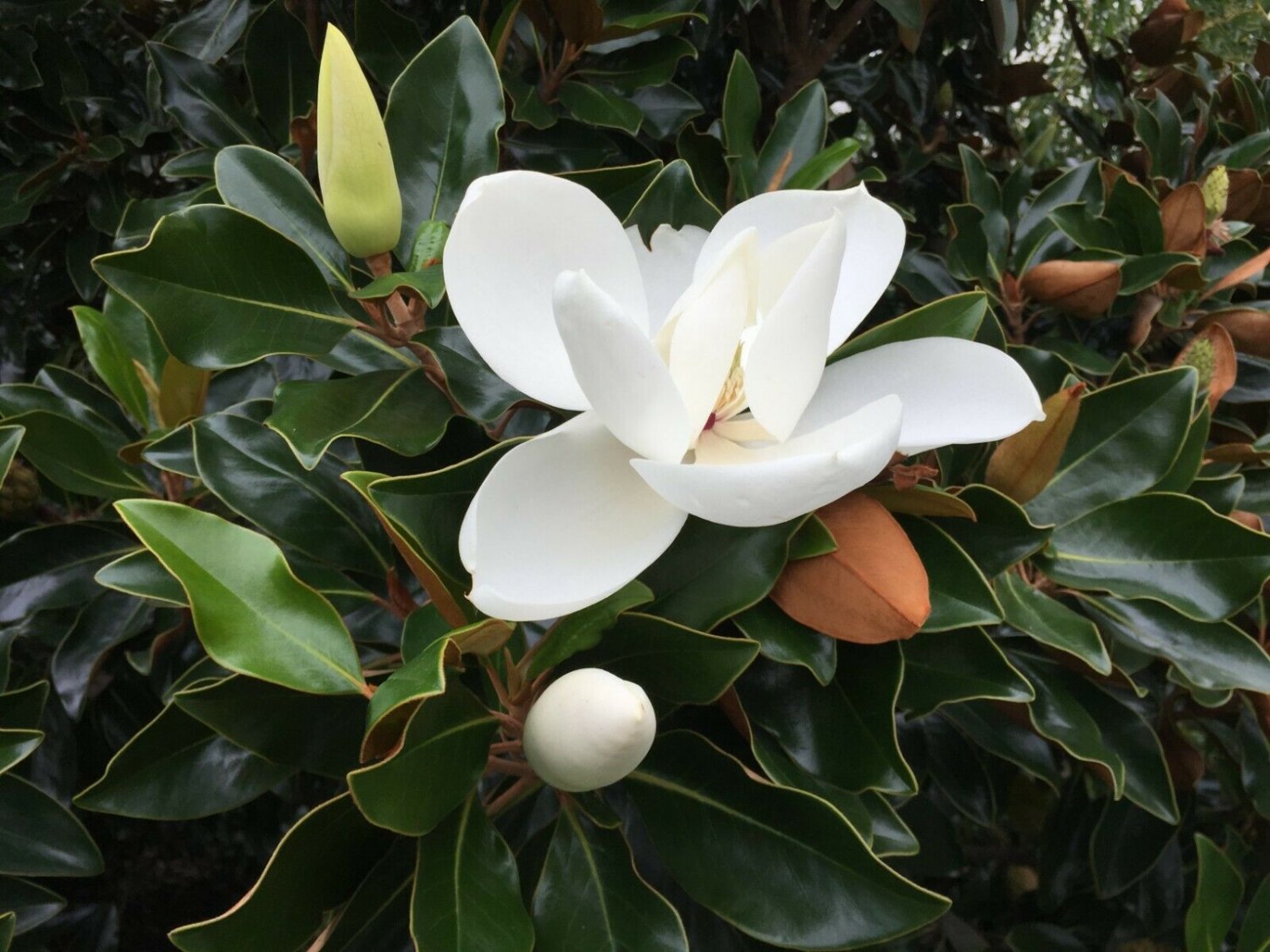
Magnolia Grandiflora Southern Magnolia Tree
In the northern parts of its range in Georgia and Mississippi, it is found at elevations of 300 to 400 feet (90-120 m) [ SUCCESSIONAL STATUS : Southern magnolia is moderately tolerant of shade. It can endure considerable shade in early life but needs more light as it becomes older [ ].

Magnolia Grandiflora Guide How to Grow & Care for “Southern Magnolia”
Southern magnolia (Magnolia grandiflora) is a magnificent tree cultivated for its glossy, green leaves and lovely, white blossoms. Remarkably flexible for an outstanding ornamental, southern magnolia thrives not only in the south but also in the Pacific Northwest. If you are thinking of planting a southern magnolia tree, you'll want to read.